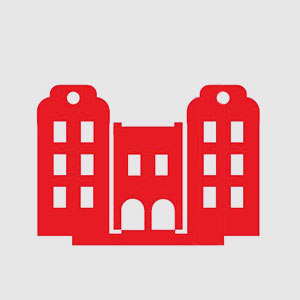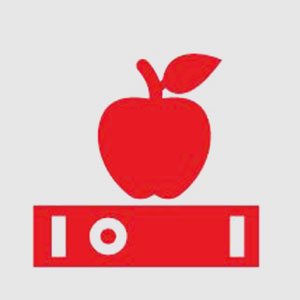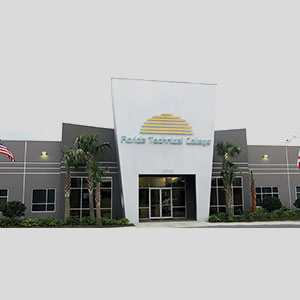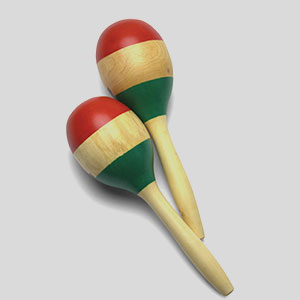Strategy June 22, 2015
Education Kicks Into Overdrive
Education takes the top spot, generating 13.6% of ad specialty revenue in 2014. It’s time to get schooled.
Education takes the top spot, generating 13.6% of ad specialty revenue in 2014. It’s time to get schooled.
School is most certainly in session. Industry-wide data from ASI reveals that education has overtaken health care as the number-one market for selling promotional products. Last year, the ad specialty industry generated 13.6% of its total revenue through sales to schools, universities and the like. Education’s market share was greater than any other sector, with health care falling to second at 11.8%.
Impressively, education’s 2014 tally represented the greatest industry revenue share accounted for by the market in at least six years. Promo pros say education’s ascent was likely fueled by a variety of factors, from a general loosening of buyer budgets to colleges and universities focusing more on marketing outreach to attract students. “With education, there’s a lot of room for growth,” says Adrienne Barker, corporate VP of marketing at Barker Specialty Company (asi/132690).
Barker’s enthusiasm is born of experience. She has significantly expanded her sales with schools, and believes she could possibly generate an additional 20% increase over the next couple of years. “You could make a living,” Barker says, “just working with schools.”
Such optimism about education abounds. Use the strategies in the pages ahead to ensure you capitalize on the market’s prodigious potential.
Focus On Smaller schools
Higher education institutions with smaller student bodies are stocked with sales opportunities.
The promo pros at PowerOne (asi/297533) can tell you about it. Michael Loughran and Scott Keyser have increased their sales with colleges and universities by 150% over the last two years by focusing on building partnerships with schools that typically have under 7,000 students.

21 million Approximate number of students attending American colleges and universities.

50 million Approximate number of students attending public elementary and secondary schools in the U.S.
98,000 Approximate tally of public elementary and secondary schools in America.

5 million Students attended private schools in the U.S. this past school year.
“Schools that have between 2,000 and 10,000 students will spend anywhere from $40,000 to $200,000 on promotional products,” says Loughran, PowerOn’s president. “You can earn a lot of business by entrenching yourself at these schools and working with all their different departments.”
Plus, smaller schools can be easier to partner with than large universities with tens of thousands of matriculants. For one thing, the less sizable institutions tend to be more decentralized, which can afford reps greater opportunity to get their feet in the door with a single buyer or department – and then branch out from there.
Even so, don’t think that turning schools of several thousand students into clients is a cakewalk. “It’s a process, but it pays off,” says Keyser, PowerOne’s director of sales.
The PA-based distributorship first broke into the niche after acquiring a company that was fulfilling a couple orders annually for a college. From there, the PowerOne sales aces bolstered their business with the school. “We went from doing two orders a year to 30 to 40 orders a year,” Loughran says.
Working referrals and calling on potential clients within the college, PowerOne built relationships with buyers in different departments. Importantly, Keyser and Loughran proposed creative branded solutions and provided dedicated service, delivering everything from cool backpacks and shirts as part of freshmen orientation day packages, to apparel for the college’s facility personnel. “We put the same plan of attack into play with other schools,” says Keyser.
So far, PowerOne has executed the plan deftly. “We now have three universities that use us as their main promotional products vendor,” says Loughran. “We have six other universities that we’ve done orders for; we believe we will have success in having them make us their go-to resource in the near future.”
Do The Leg Work
While smaller colleges make excellent clients, it’s also true that some of the most lucrative paydays exist with large universities. You know the ones – the schools with a national name, a competitive Division 1 football team and a student body the size of a small city.
Nevin Bansal recently became a preferred vendor for just such a university, and his sales have taken flight as a result. Since partnering with the university about a year ago, his monthly revenue has increased by 25%. “We’ve provided a little bit of everything, from T-shirts, polos, pens and mugs to padfolios, plaques, awards, bags, banners and table aprons,” says Bansal, president/CEO of Outreach Promotional Solutions (asi/396790).
Additionally, counting the university as a client has powered Bansal’s efforts to partner with other higher education institutions. “It helps open doors when you can provide examples and references from a major university,” he says.
Reps eager to emulate Bansal’s success must be persistent. For several years, Bansal called on the large university’s purchasing department, earning a smattering of one-off orders, all for less than $5,000. He couldn’t do higher-volume deals because those were reserved for preferred vendors, and the university was not looking for new preferred partners at the time.
Nonetheless, Bansal developed relationships and gently reminded buyers that, once the university was again in the market for preferred vendors, he would like to be considered. The diligence bore fruit when he was invited to apply for preferred vendor status. Approximately 60 other companies also participated in the lengthy RFP process. Bansal was among the 10 or so selected.
His success hinged on his ability to understand and meet the university’s goals. He proved he could provide competitive pricing (thanks to being part of a purchasing group) and meet quality expectations (thanks to relationships with good suppliers and decorators). He showed he could adhere to brand guidelines and make creative product/imprinting suggestions, even producing decorated samples of about 20 products. He also demonstrated that his company could integrate seamlessly with the university’s online purchasing model.
To earn the business of a major university, Bansal suggests that you start making contacts in the institution’s purchasing department. “Find out how they utilize promotional products and see what they’re looking for in a vendor,” he says. “Customize your messaging to them.” Also, support the university – give back in some way. Bansal donates part of the proceeds of Outreach’s sales to a scholarship fund at the university.“We’ve been able to generate win-win opportunities,” he says.
Improve Service
Schools represent excellent sources of repeat business. Given this, it’s no surprise that competitors aim to woo away your education clients. Savvy reps, however, keep the competition at arm’s length by continually enhancing the quality of service and solutions they provide. “It’s important that we not get jaded – that we always think creatively to solve problems and serve our clients better,” says Gillian Hammond, account manager at Brand Fuel (asi/145025).
Hammond greatly improved the customer experience for a Catholic high school in Virginia. For a while, she and the client kept running into the same issue. The school consistently needed decorated hoodies, T-shirts, hats, tote bags and more for its onsite spirit store. Still, because of fear of being saddled with unsold inventory, the school only ordered products in small quantities. As a result, the embroidery and screen-printing charges were very expensive. To make a margin, the spirit store had to charge exorbitant prices.
Hammond set about finding a solution. “We approached the resolution in the traditional manner: Slight tweaks to the logo to create ease in decoration, and switching vendors” in the hope of finding a decorator who could produce the logo well at a cost-effective price. Unfortunately, the efforts fell short.
But then, at a trade show, Hammond discovered EMT (asi/52263), a supplier with products that include patches. These were the answer to the school’s decoration dilemma. “I could order 100 patches of the school’s logo and keep them ready so that when they needed two hoodies, we could pull out a couple patches and have them put on for $1,” she says. The client was thrilled, and has remained committed to working with the Brand Fuel rep.
Leverage Connections
Of course, before you can consistently put smiles on the faces of school clients you have to win their business for the first time. Sometimes, the best tactic for stoking sales with schools is to network into institutions where you are personally plugged in.
Naturally, this includes schools your children go (went) to and institutions you attended. Lee Pagan has generated strong sales and lasting client relationships by executing this approach. “I sell to grade schools, high schools and a few colleges and universities,” he says. “I have personal ties to most of them.”
Pagan’s education clients includes the high school he attended. Networking through fellow graduates, he earned the opportunity to provide bags, polo shirts and other items for an alumni golf tournament. He added value by helping the association secure sponsors for the event. Pagan’s stellar performance on the initial order helped him earn subsequent business from the association and other buyers at the school. “I’ve worked with the football team and the bookstore,” says the owner of The Results Group (asi/128461). Similarly, Pagan turned the PTO at his son’s grade school into a client. It all started with an informal chat with the PTO president while she and Pagan were waiting to pick up their kids at the school. “We did 1,200 spirit day shirts for them,” he says. The partnership continues.
While targeting alma maters is smart, realize that the web of contacts connecting you to different educational institutions is intricate. Friends, family members, clients, trusted partners in your business network – all were educated somewhere and might be able to get you acquainted with school buyers.
“It’s important to ask for referrals and be out walking the campus introducing yourself.”
Jamie Moore, Hello Promo
Remember Community Colleges
In the U.S., there are more than 1,100 community colleges, each packed with a bevy of potential clients. Promo gurus like Jamie Moore are seizing the opportunity these colleges present. The account manager at Hello Promo (asi/223302) works with five community colleges in the Phoenix area. The range of buyers Moore serves at these institutions is vast.
“The great thing about community colleges is that everyone has their own budget,” she says. “There are lots of projects and programs.”
About a decade ago, Moore made headway with community colleges by fulfilling a low-volume order of sunglasses for a friend who happened to be employed in an institution’s recruitment department. She grew her list of clients from there. “It’s important to ask for referrals and be out walking the campus introducing yourself,” she says.
After earning new clients, she nurtured relationships with them. She continued to provide branded solutions for certain buyers as they moved to new positions at other community colleges within a regional district. This partnering played an important part in helping her earn new business at the different schools. “The growth happened organically,” Moore says.
Barker also built business with a community college in the Orlando area. After earning approved vendor status, Barker used referrals and savvy cold-calling to expand her reach to the point where she now works with various departments, student groups, security personnel and alumni buyers. Recently, she completed a $50,000 order of poly binders, which were gifted to incoming students to help them organize all the paperwork they receive when matriculating.
Case Study
Target Tech Schools

As demand for skilled tradespeople increases, more students are considering attending technical schools. The race is on among trade schools to attract these students to their institutions.

Fortunately for ad specialty reps, promotional products have an important role to play in tech school marketing. “They have to put something tangible in the kids’ hands,” says Adrienne Barker, corporate VP of marketing at Barker Specialty Company (asi/132690). “That’s where promotional products come in.”
Barker counts Florida Technical College among her clients. Maracas bearing the school’s branding represent just one of the unique solutions she has delivered for the institution. Orders of about 1,000 maracas occur a couple times annually. School representatives give out the maracas to prospective students at various events. “It really helps them get their message out there,” she says.
Case Study
Key In on Commencement
When college commencement season rolls around, Bob Steinbach prays for rain.

In addition to ponchos, Steinbach delivers items like banners and buttons for graduation. The commencement fulfillment is only one aspect of the broader business he does with the university. It highlights that “there are lots of little niches like this within schools where you can generate business,” he says.
Sales Stokers
Use these three tips to increase sales in the education market – and beyond.
Know What’s Hot: Logoed apparel sells strongly in education, but the wearables and decoration must exhibit retail-inspired style. Learn what’s hot by talking to trusted apparel suppliers, checking out what’s trending at retail (department store catalogs help) and observing what different potential end-users are wearing. Remember: Ascertain which wearables will appeal not only to students, but also teachers and parents.
Look Beyond Schools: The education market isn’t just about schools. Seek to partner with private industry companies, such as tutoring centers and standardized test makers, that operate in the education space. See “Step 5” in this month’s Sales Boost section for additional insights.
Network To New Clients: Once you establish a relationship with a buyer at a school or university, ask if they can refer you to other quality prospects at the institution. Relatedly, see if the client can connect you with leads in the community, such as local business owners and vendors that serve the school.
Christopher Ruvo is senior writer for Advantages. Contact: cruvo@asicentral.com. Follow: @ChrisR_ASI
